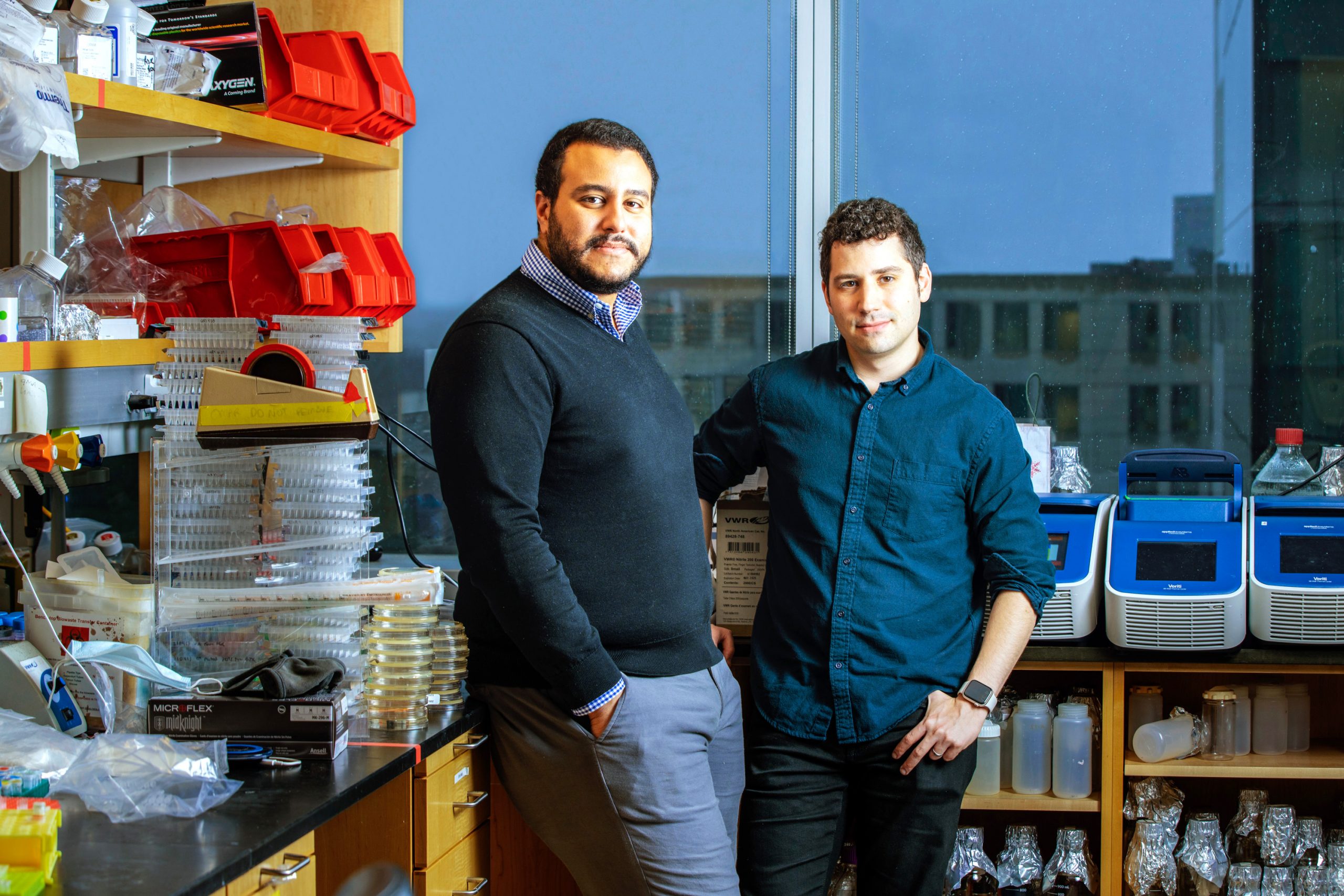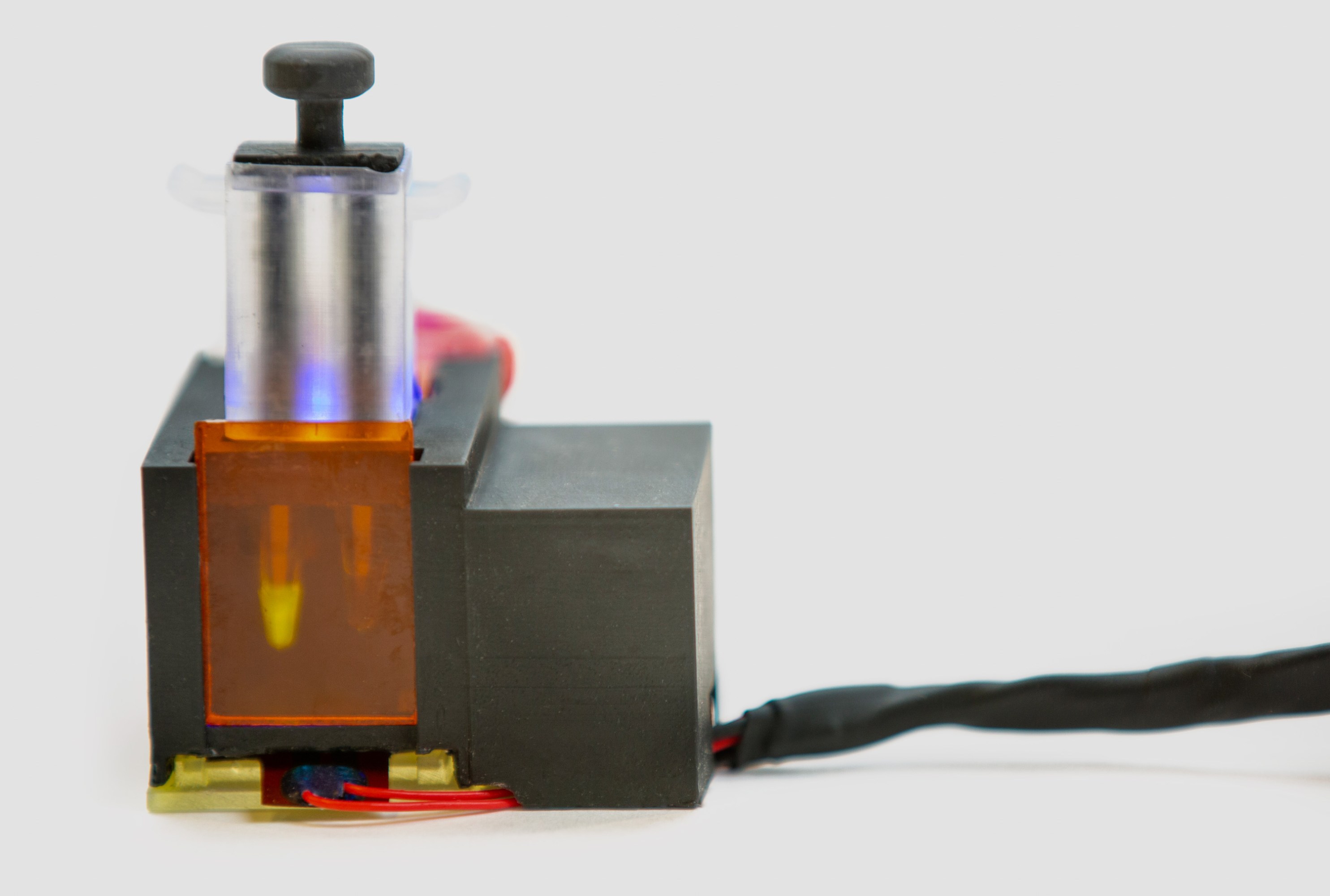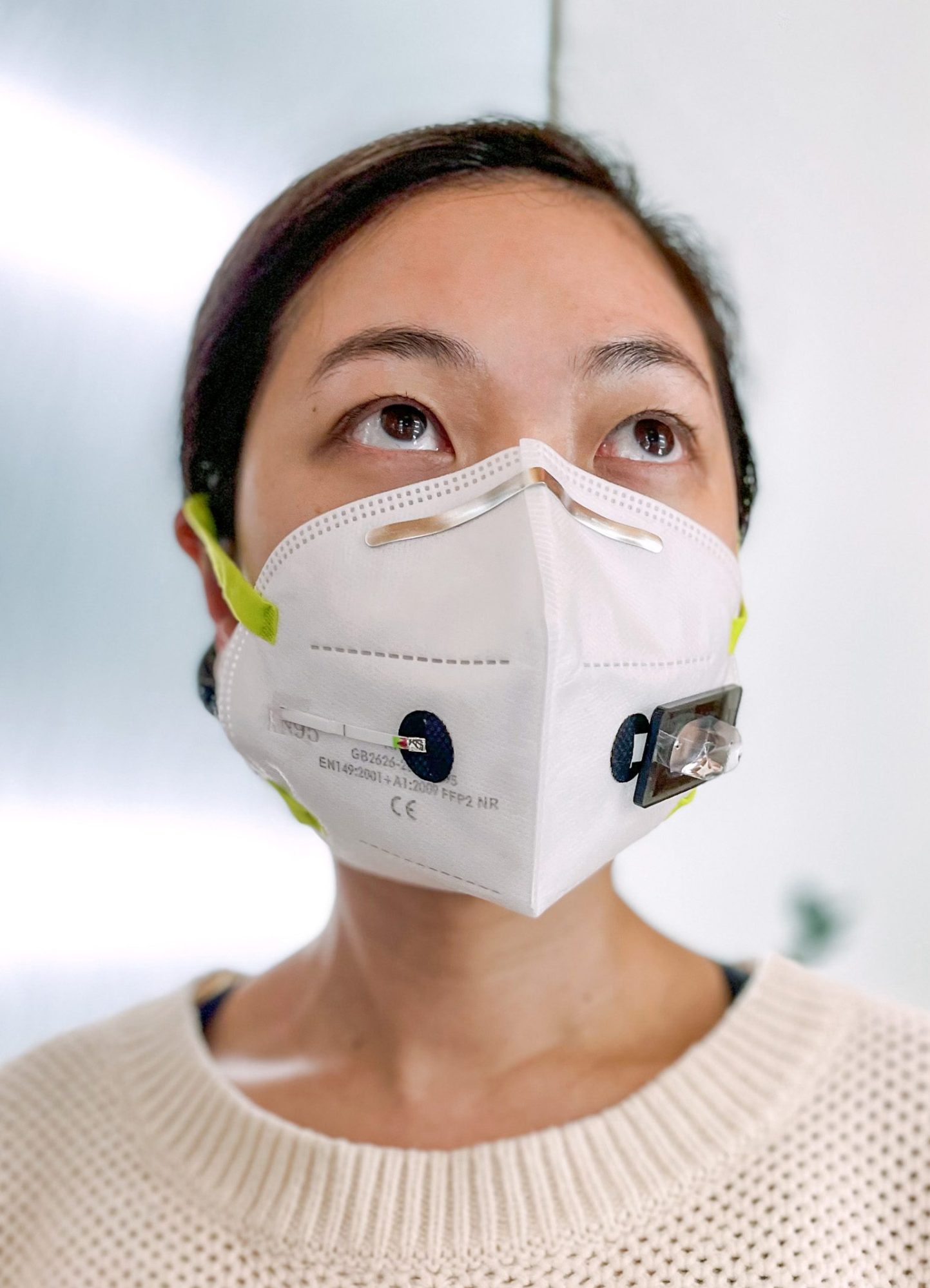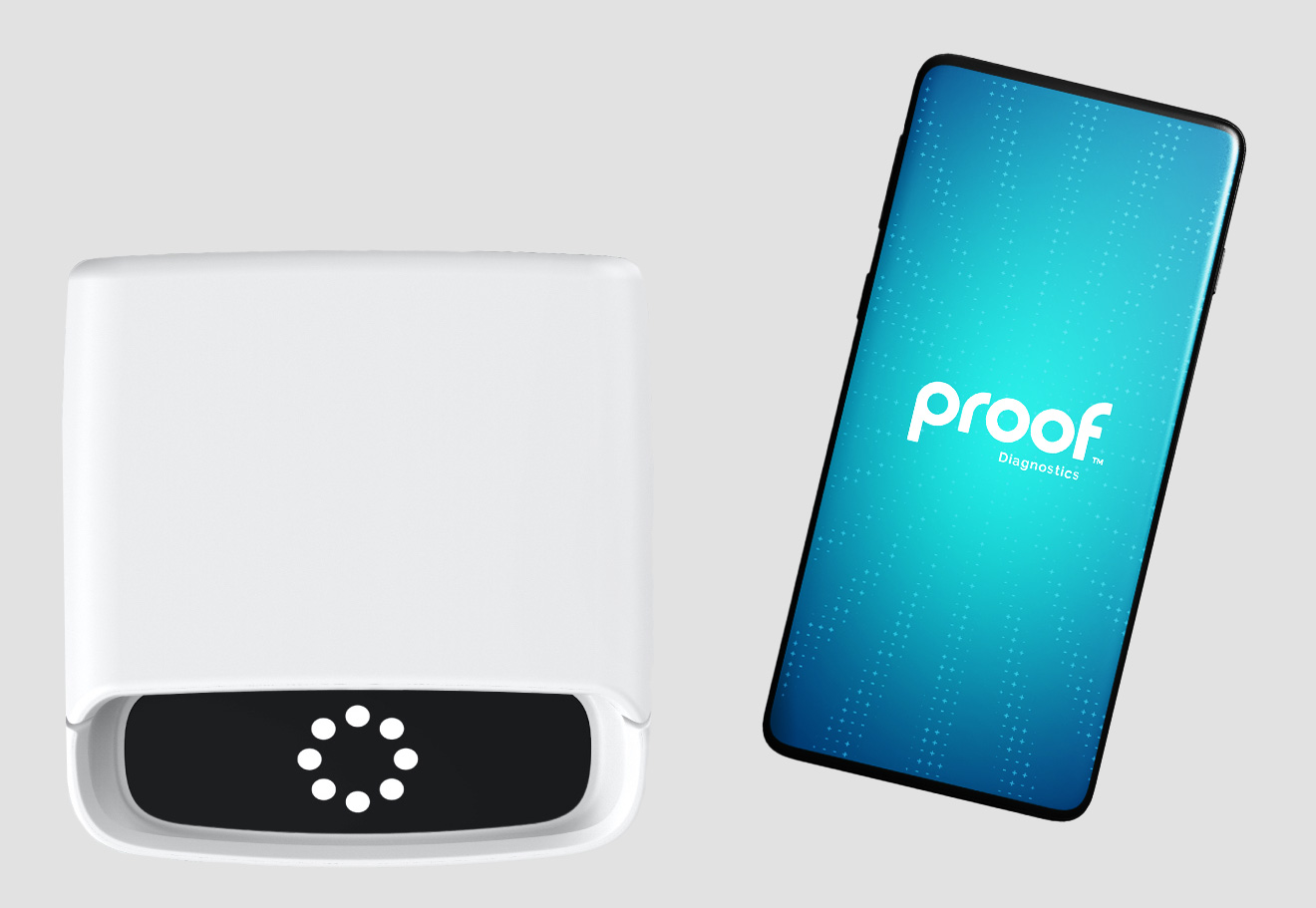Tech
These fast, cheap tests could help us coexist with covid
Published
2 years agoon
By
Terry Power
In comparison, rapid antigen tests are quicker and easier to administer. Rather than looking for nucleic acid, they detect the presence of viral proteins called antigens that are present on the surface of the virus. Such tests, which can be done at home, deliver results quickly, but they tend to be less accurate than PCR tests. People in the very early or late stages of the disease may have a low viral load, meaning there may not be enough telltale protein for the test to pick up, so they could be infected with SARS-CoV-2 but receive negative results from a rapid antigen test—and unwittingly keep spreading the virus.
Until recently, we have had to choose between the accuracy of PCR tests and the speed of antigen tests. But what if we could have both, and at a low cost? Through innovations like wearable tech, convenient home-testing devices, and even entirely new platforms, MIT researchers are developing accurate, cheap covid tests for homes and clinics that provide results in under an hour.
Next-gen covid diagnostics
In 2015, long before coronavirus was making headlines, Omar Abudayyeh ’12, PhD ’18, and Jonathan Gootenberg ’13 made a surprising discovery in the lab that suggested a powerful new use for the gene-editing technique known as CRISPR. (CRISPR is so precise at inserting and deleting DNA that it has been described as using molecular scissors.) Both were doctoral students working in the lab of Feng Zhang, an MIT neuroscience and biological engineering professor, and a core member of the Broad Institute. While looking for new enzymes for CRISPR gene-therapy applications, they discovered a peculiar class of enzymes that can be programmed to search for specific RNA or DNA sequences (from a virus, for example) and, upon finding them, chop them up. However, the enzymes don’t always stop there—in fact, at least in a test tube, they chop up all strands of RNA.
“They become this nucleic acid bomb and start chewing everything up. That’s not great for therapeutics, because it kills cells,” Abudayyeh says. But with a few tweaks, CRISPR proved to be useful as a diagnostic tool.
Building on this discovery, Collins, Zhang, Abudayyeh, and Gootenberg (along with other Broad Institute colleagues, including Pardis Sabeti ’97) published a paper in Science in 2017 describing how CRISPR could be used not just to edit genes, but to detect genetic sequences specific to any disease-causing infectious agent. First, their method called for amplifying as little as a single molecule of DNA or RNA from the genetic material in a sample at a constant temperature (avoiding the alternating temperatures required with PCR). Then instead of using CRISPR to insert or delete DNA, they used a different enzyme, Cas13a, to recognize the amplified materials—including those of bacteria and viruses—and simultaneously activate a fluorescent reporter gene. Abudayyeh and Gootenberg came up with the name Sherlock (Specific High-sensitivity Enzymatic Reporter unLOCKing) to describe the new method, which offers extremely high sensitivity on par with PCR-based diagnostics.
M SCOTT BRAUER
Two years later, Collins, Zhang, Sabeti, Gootenberg, and Abudayyeh teamed up with other colleagues to cofound Sherlock Biosciences, a biotech company focused on applying this technology to offer fast, accurate diagnostics, ideally without the expensive lab equipment and skill needed for PCR tests. The company began designing rapid tests to detect sexually transmitted diseases such as chlamydia and gonorrhea, and even tumor cell mutations. Meanwhile, Abudayyeh and Gootenberg (who earned spots on MIT Technology Review’s list of 35 Innovators under 35 in 2019 and 2021) became MIT McGovern Institute fellows and established the AbuGoot Lab there in 2019 to develop medical diagnostics and therapeutics through molecular and cellular engineering.
As covid began making its way around the world in late January 2020, Abudayyeh, Gootenberg, and Zhang turned their attention to rapid covid testing. Continuing their longstanding collaboration, they spent two weeks experimenting in the lab to find new enzymes and primers that would allow them to adapt their CRISPR-based Sherlock test to detect SARS-CoV-2. They developed a test that uses two guide-RNA sequences that target signature viral RNA sequences specific to SARS-CoV-2 and, upon finding them, generate a signal that can be detected with either a fluorescent reader or a lateral flow strip test. By May 2020, Sherlock Biosciences had received emergency use authorization from the FDA for its Sherlock-based covid test—the first FDA approval involving CRISPR. Although the Sherlock covid test could be used only in specially certified labs, it only required one hour for results. And its sensitivity was on par with the gold-standard RT-PCR tests.
Zhang, Abudayyeh, Gootenberg, and others also developed STOPCovid, a rapid, inexpensive, and scalable diagnostic test for the virus that they freely shared for research purposes in May 2020. They redesigned the CRISPR diagnostic test to work with fewer steps so that it could be run in doctors’ offices and clinics—away from a certified lab.
STOPCovid eliminates the need to open test tubes while running the test, which could contaminate samples, and simplifies the extraction process by incorporating magnetic beads that bind to and help concentrate viral RNA after it is extracted from the virus. It also reduces the isothermal amplification process used in the original Sherlock test from two steps to one. If the N gene of the SARS-CoV-2 genome is present in a sample, an enzyme (AapCas12b) senses its amplified sequences and produces a fluorescent reporter signal. When the fluorescent signal reaches a certain threshold, the test is considered positive.
Although the STOPCovid test is slightly simpler than the original Sherlock test, it is not FDA-approved. And it still relies on the use of lab equipment such as hot water baths or PCR machines that may not be available to all users, Abudayyeh says.
One-pot Sherlock
Collins and his lab have also built upon the original Sherlock technology to create a minimally instrumented Sherlock test, or miSherlock, capable of producing covid-19 test results in about an hour using saliva samples. It can extract, purify, and concentrate RNA for three different viral variants: alpha (B.1.1.7), B.1.351 (beta), and gamma (P.1).
While most CRISPR-based diagnostics rely on a workflow that involves multiple liquid-handling steps using equipment such as pipettes, heating blocks, and centrifugal machines, miSherlock is a self-contained system. All the CRISPR-based chemistry takes place in one chamber, and this “one-pot Sherlock” device makes it possible to move CRISPR testing into a doctor’s office or even a home.

With miSherlock, a critical preprocessing step allows for the test to be saliva-based. Saliva tends to have a slightly higher viral load than mucus in nasal passages, but it contains enzymes that destroy RNA. In the miSherlock test, a user provides 4 milliliters of saliva, which goes into a prep chamber where those enzymes are inactivated by heat and two chemical reagents. Next, the saliva passes through a membrane that extracts and concentrates the viral RNA. Then a one-pot Sherlock reaction is initiated as the device punctures sealed water packets to activate freeze-dried CRISPR/Cas components, amplifying the concentrated viral RNA and producing a telltale fluorescent signal if SARS-CoV-2 or one of three variants is present. The researchers described this technology in Science Advances in August 2021.
“Our miSherlock technology only costs a few dollars, it can be 3D-printed, and it can provide an analysis of saliva samples in under an hour,” Collins says. “We’re positioning this as a point-of-care version of the earlier work with Sherlock.”
Wearable tests
Collins has another idea for cheap rapid tests, and it involves a familiar component: the face mask. His lab is working on a single-use disposable sensor that can be inserted inside a face mask to test the wearer’s covid status.
Before the pandemic, the lab was exploring how to use synthetic genetically engineered circuits to create fast, flexible diagnostics. These circuits mimic the logical function of electrical circuits but are built with cell-free, biologically engineered cellular components such as proteins, ribosomes, and nucleic acid. Collins and his team—including Luis Soenksen, PhD ’20, of MIT’s Abdul Latif Jameel Clinic for Machine Learning in Health, and Peter Nguyen, a research scientist at Harvard’s Wyss Institute for Biologically Inspired Engineering—aimed to program them to identify the genetic signatures of specific pathogens.
After figuring out how to print these genetically engineered sensors on paper for Zika tests during the 2015–’16 outbreak in the Americas, his team turned its attention to transforming lab coats. “We were thinking about developing a lab coat of the future that could report on pathogen exposure,” says Collins, who is also affiliated with the Wyss Institute. “We had already discovered that one could freeze-dry cell-free extracts and synthetic gene circuits onto paper, to create paper-based diagnostics. And we did so for Ebola and Zika. But then we also recognized that we could freeze-dry these extracts onto other porous materials, including clothing.”
Collins envisioned coats made of fabric imprinted with genetically engineered sensors capable of detecting a variety of pathogens. But as the pandemic persisted, he and his team realized that the same technology could be used inside face masks. Instead of detecting pathogens from environmental exposure, however, the mask sensors would detect SARS-CoV-2 from the wearer’s respiratory droplets.

WYSS INSTITUTE AT HARVARD UNIVERSITY
The freeze-dried cellular components can remain stable for months. For the face mask application, these components are embedded in a paper mask and encircled by a silicone elastomer ring, which prevents the exhaled sample from escaping the sensor. The wearer pushes a button to inject a small amount of water onto the sensor, and the activated cellular components in the sensor react with the targeted DNA or RNA sequence—if it is present—to induce a color change that signals the presence of the virus.
“It will report out in roughly one hour the infection state of an individual, and it has very high sensitivity and specificity on par with lab-based tests,” Collins says. He is exploring regulatory paths for the face mask concept.
While the current version of the sensor can differentiate between coronavirus variants, Collins and his team are pushing the system to be multifaceted and to detect a variety of other respiratory viruses. The noninvasive device, which continuously monitors for about two hours, will also be affordable. “Probably just a few dollars,” Collins says. “We envision these being something people put on while they go to work or out shopping.”
At-home tests
Abudayyeh and Gootenberg are continuing to push CRISPR-based testing into affordable, rapid diagnostics that anyone can use at home. With Zhang, they cofounded the startup Proof Diagnostics, where they are building on their STOPCovid work, fine-tuning the chemistry steps to untether the test from a laboratory and make it self-contained in a device that can be used in clinics, at workplaces, or at home.

COURTESY PHOTO
The Proof Diagnostics test requires a nasal swab, and the wand must then be swirled in a cartridge containing a lysis solution filled with tiny magnetic beads that bind to the viral RNA, similar to the STOPCovid test. Once the RNA is converted into DNA and amplified (using a process that doesn’t require temperature changes), the CRISPR AapCas12b enzyme reacts in the presence of the amplified covid DNA, creating a fluorescent signal. A portable device reads the cartridge and indicates a positive test if a fluorescent threshold is reached; users can check the test’s progress through an app. In a prototype version of the test, results took 30 to 40 minutes in cases of low viral detection, Abudayyeh says, but were available in as few as 18 minutes in cases of high viral load.
“It’s fast enough that you are not waiting too long for results, and it’s sensitive enough that you will actually catch the positives, unlike the rapid antigen tests,” Gootenberg says. “One of the thoughts is that we can use tech like this to gather safely again. We need to cross this line to make testing truly meaningful.”
“The main challenge is making the device work with chemistry, and making it work every time,” Abudayyeh says. “Everything matters—what material you have in the cartridge, what gets stuck, when you freeze-dry your reagents, is it rehydrating over time? All these components have so much complexity that it just takes a long time to work through every single bug.”
The tests and device are currently being used for investigational purposes in several point-of-care clinics in Florida, North Carolina, Washington, and Canada. Proof Diagnostics plans to use this investigational data to seek FDA approval.
Assessing immunity and a new test platform
Other MIT researchers are investigating novel platforms that detect either covid or the body’s ability to fight it. Megan McBee ’02, PhD ’07, a program director for the Singapore–MIT Alliance for Research and Technology, or SMART, collaborated on an initiative to transform highly accurate neutralizing antibody (NAb) lab tests into rapid point-of-care tests.
The immune system produces neutralizing antibodies that render invading pathogens like SARS-CoV-2 incapable of causing an infection. The body can only make these antibodies if it recognizes a specific pathogen through either natural infection or vaccination. But don’t confuse antibodies and antigens.
“The NAb test answers a different question than the more familiar rapid antigen tests,” McBee says. “NAb tests inform whether a person has levels of neutralizing antibodies that are likely high enough to block the virus from infecting them. Rapid antigen tests inform about whether a person is infected with the virus.” NAb tests can detect prior covid infections and determine if someone mounted a sufficient immune response after an infection. They can be used to monitor the antibody response after vaccination and offer insight on a vaccine’s efficacy and durability. They can also help figure out whether prior infections or vaccinations provide immune protection against new covid variants. And knowing the level of immune protection individuals, or populations, have could help guide public health policy.
SMART’s Antimicrobial Resistance Interdisciplinary Research Group, which includes MIT chemical engineer Hadley Sikes (see “Molecular monitor,” p. 26) and collaborators from Nanyang Technological University in Singapore developed a rapid point-of-care NAb test that performs as well as the best available lab-based NAb tests, she says. The vertical-flow paper-based test gives results in 10 minutes.
Using a drop of blood from a finger prick, the test senses complex interactions between the angiotensin-converting enzyme II (ACE2) receptor of a host cell and the receptor-binding domain of the SARS-CoV-2 virus. If NAbs are present, the test can detect disruptions between these two elements within 10 minutes—a vast improvement over the hours or days required for traditional NAb tests. This new platform eliminates the need for the laboratory-based testing, equipment, and personnel all other NAb-based tests require.
“The test can be done anywhere that a basic screening can be done,” McBee says. “But currently, the test requires a specialized, but small, point-of-care reader. Hence, it cannot be done at home, yet.”

The new test can also detect clinically relevant NAb ranges that correspond to vaccination status. It also detected substantially reduced NAbs against the beta, gamma, and delta variants in people who had received the covid-19 vaccine three months earlier. The decline in NAbs against viral variants offers insights into the rise of breakthrough infections among vaccinated people, showing that their level of protection against emerging viral variants may wane depending upon which vaccine they received and possibly how long ago they received it.
SMART, Nanyang Technological University, and a spinoff company from SMART called Thrixen are pursuing the final development, regulatory compliance, and commercialization of their 10-minute NAb test through agencies in Singapore.
Other MIT researchers are looking for entirely new testing platforms. Before the pandemic, chemical engineering professor Michael Strano and his lab had developed carbon nanotube structures wrapped in polymers that could sense a variety of viral proteins. They quickly adapted this platform to identify viral proteins specific to SARS-CoV-2. Because their method doesn’t rely on antibodies or reagents that take a long time to generate and purify, Strano’s team zeroed in on a modified carbon nanotube that could detect these proteins—and they produced a working prototype within about 10 days of starting the project.
Strano’s team had already shown that when carbon nanotubes are encased in different kinds of polymers, they can chemically sense target molecules. Here’s how it works: The carbon nanotubes naturally fluoresce when exposed to laser light waves. The polymers wrapped around these tubes form loops that create a corona-like layer on the tube’s outer surface. Different polymers have different structural loop forms that can trap target molecules—in this case, viral proteins. When the looping polymers have trapped and bound various molecules, that alters the intensity of fluorescence the carbon nanotube gives off—and an optical reader can detect this difference. The approach is known as corona phase molecular recognition.
Most covid tests rely on nasal swabs because the carbohydrate and digestive enzyme molecules of saliva typically interfere with protein detection. But Strano’s team, which includes postdoctoral researcher Sooyeon Cho (recently named an assistant professor at Sungkyunkwan University) and graduate student Xiaojia Jin, SM ’21, found that their technique can detect the SARS-CoV-2 nucleocapsid protein, which encapsulates the viral genome and is essential to viral replication, when it’s dissolved in saliva. Working with InnoTech Precision Medicine, a Boston-based diagnostic developer, they built a prototype that can detect this protein in saliva samples in five minutes.
While we all hoped the pandemic would be over by now, it appears to be transitioning to coexistence and likely will one day join the ranks of other coronaviruses that cause mild, seasonal colds. Until then, MIT researchers are retooling their labs and shifting their focus to address one of the most pressing needs of the covid era: quick, inexpensive tests we can use in hospitals and homes.
You may like
-


Decoding the data of the Chinese mpox outbreak
-


China is suddenly dealing with another public health crisis: mpox
-


The Download: overhauling air conditioning, and China’s fast fashion war
-


Shein sued Temu. Temu sued Shein. The war over fast fashion is heating up.
-


Face recognition in the US is about to meet one of its biggest tests
-


Covid hasn’t entirely gone away—here’s where we stand

My senior spring in high school, I decided to defer my MIT enrollment by a year. I had always planned to take a gap year, but after receiving the silver tube in the mail and seeing all my college-bound friends plan out their classes and dorm decor, I got cold feet. Every time I mentioned my plans, I was met with questions like “But what about school?” and “MIT is cool with this?”
Yeah. MIT totally is. Postponing your MIT start date is as simple as clicking a checkbox.
COURTESY PHOTO
Now, having finished my first year of classes, I’m really grateful that I stuck with my decision to delay MIT, as I realized that having a full year of unstructured time is a gift. I could let my creative juices run. Pick up hobbies for fun. Do cool things like work at an AI startup and teach myself how to create latte art. My favorite part of the year, however, was backpacking across Europe. I traveled through Austria, Slovakia, Russia, Spain, France, the UK, Greece, Italy, Germany, Poland, Romania, and Hungary.
Moreover, despite my fear that I’d be losing a valuable year, traveling turned out to be the most productive thing I could have done with my time. I got to explore different cultures, meet new people from all over the world, and gain unique perspectives that I couldn’t have gotten otherwise. My travels throughout Europe allowed me to leave my comfort zone and expand my understanding of the greater human experience.
“In Iceland there’s less focus on hustle culture, and this relaxed approach to work-life balance ends up fostering creativity. This was a wild revelation to a bunch of MIT students.”
When I became a full-time student last fall, I realized that StartLabs, the premier undergraduate entrepreneurship club on campus, gives MIT undergrads a similar opportunity to expand their horizons and experience new things. I immediately signed up. At StartLabs, we host fireside chats and ideathons throughout the year. But our flagship event is our annual TechTrek over spring break. In previous years, StartLabs has gone on TechTrek trips to Germany, Switzerland, and Israel. On these fully funded trips, StartLabs members have visited and collaborated with industry leaders, incubators, startups, and academic institutions. They take these treks both to connect with the global startup sphere and to build closer relationships within the club itself.
Most important, however, the process of organizing the TechTrek is itself an expedited introduction to entrepreneurship. The trip is entirely planned by StartLabs members; we figure out travel logistics, find sponsors, and then discover ways to optimize our funding.

COURTESY PHOTO
In organizing this year’s trip to Iceland, we had to learn how to delegate roles to all the planners and how to maintain morale when making this trip a reality seemed to be an impossible task. We woke up extra early to take 6 a.m. calls with Icelandic founders and sponsors. We came up with options for different levels of sponsorship, used pattern recognition to deduce the email addresses of hundreds of potential contacts at organizations we wanted to visit, and all got scrappy with utilizing our LinkedIn connections.
And as any good entrepreneur must, we had to learn how to be lean and maximize our resources. To stretch our food budget, we planned all our incubator and company visits around lunchtime in hopes of getting fed, played human Tetris as we fit 16 people into a six-person Airbnb, and emailed grocery stores to get their nearly expired foods for a discount. We even made a deal with the local bus company to give us free tickets in exchange for a story post on our Instagram account.
Tech
The Download: spying keyboard software, and why boring AI is best
Published
9 months agoon
22 August 2023By
Terry Power
This is today’s edition of The Download, our weekday newsletter that provides a daily dose of what’s going on in the world of technology.
How ubiquitous keyboard software puts hundreds of millions of Chinese users at risk
For millions of Chinese people, the first software they download onto devices is always the same: a keyboard app. Yet few of them are aware that it may make everything they type vulnerable to spying eyes.
QWERTY keyboards are inefficient as many Chinese characters share the same latinized spelling. As a result, many switch to smart, localized keyboard apps to save time and frustration. Today, over 800 million Chinese people use third-party keyboard apps on their PCs, laptops, and mobile phones.
But a recent report by the Citizen Lab, a University of Toronto–affiliated research group, revealed that Sogou, one of the most popular Chinese keyboard apps, had a massive security loophole. Read the full story.
—Zeyi Yang
Why we should all be rooting for boring AI
Earlier this month, the US Department of Defense announced it is setting up a Generative AI Task Force, aimed at “analyzing and integrating” AI tools such as large language models across the department. It hopes they could improve intelligence and operational planning.
But those might not be the right use cases, writes our senior AI reporter Melissa Heikkila. Generative AI tools, such as language models, are glitchy and unpredictable, and they make things up. They also have massive security vulnerabilities, privacy problems, and deeply ingrained biases.
Applying these technologies in high-stakes settings could lead to deadly accidents where it’s unclear who or what should be held responsible, or even why the problem occurred. The DoD’s best bet is to apply generative AI to more mundane things like Excel, email, or word processing. Read the full story.
This story is from The Algorithm, Melissa’s weekly newsletter giving you the inside track on all things AI. Sign up to receive it in your inbox every Monday.
The ice cores that will let us look 1.5 million years into the past
To better understand the role atmospheric carbon dioxide plays in Earth’s climate cycles, scientists have long turned to ice cores drilled in Antarctica, where snow layers accumulate and compact over hundreds of thousands of years, trapping samples of ancient air in a lattice of bubbles that serve as tiny time capsules.
By analyzing those cores, scientists can connect greenhouse-gas concentrations with temperatures going back 800,000 years. Now, a new European-led initiative hopes to eventually retrieve the oldest core yet, dating back 1.5 million years. But that impressive feat is still only the first step. Once they’ve done that, they’ll have to figure out how they’re going to extract the air from the ice. Read the full story.
—Christian Elliott
This story is from the latest edition of our print magazine, set to go live tomorrow. Subscribe today for as low as $8/month to ensure you receive full access to the new Ethics issue and in-depth stories on experimental drugs, AI assisted warfare, microfinance, and more.
The must-reads
I’ve combed the internet to find you today’s most fun/important/scary/fascinating stories about technology.
1 How AI got dragged into the culture wars
Fears about ‘woke’ AI fundamentally misunderstand how it works. Yet they’re gaining traction. (The Guardian)
+ Why it’s impossible to build an unbiased AI language model. (MIT Technology Review)
2 Researchers are racing to understand a new coronavirus variant
It’s unlikely to be cause for concern, but it shows this virus still has plenty of tricks up its sleeve. (Nature)
+ Covid hasn’t entirely gone away—here’s where we stand. (MIT Technology Review)
+ Why we can’t afford to stop monitoring it. (Ars Technica)
3 How Hilary became such a monster storm
Much of it is down to unusually hot sea surface temperatures. (Wired $)
+ The era of simultaneous climate disasters is here to stay. (Axios)
+ People are donning cooling vests so they can work through the heat. (Wired $)
4 Brain privacy is set to become important
Scientists are getting better at decoding our brain data. It’s surely only a matter of time before others want a peek. (The Atlantic $)
+ How your brain data could be used against you. (MIT Technology Review)
5 How Nvidia built such a big competitive advantage in AI chips
Today it accounts for 70% of all AI chip sales—and an even greater share for training generative models. (NYT $)
+ The chips it’s selling to China are less effective due to US export controls. (Ars Technica)
+ These simple design rules could turn the chip industry on its head. (MIT Technology Review)
6 Inside the complex world of dissociative identity disorder on TikTok
Reducing stigma is great, but doctors fear people are self-diagnosing or even imitating the disorder. (The Verge)
7 What TikTok might have to give up to keep operating in the US
This shows just how hollow the authorities’ purported data-collection concerns really are. (Forbes)
8 Soldiers in Ukraine are playing World of Tanks on their phones
It’s eerily similar to the war they are themselves fighting, but they say it helps them to dissociate from the horror. (NYT $)
9 Conspiracy theorists are sharing mad ideas on what causes wildfires
But it’s all just a convoluted way to try to avoid having to tackle climate change. (Slate $)
10 Christie’s accidentally leaked the location of tons of valuable art 

Seemingly thanks to the metadata that often automatically attaches to smartphone photos. (WP $)
Quote of the day
“Is it going to take people dying for something to move forward?”
—An anonymous air traffic controller warns that staffing shortages in their industry, plus other factors, are starting to threaten passenger safety, the New York Times reports.
The big story
Inside effective altruism, where the far future counts a lot more than the present

October 2022
Since its birth in the late 2000s, effective altruism has aimed to answer the question “How can those with means have the most impact on the world in a quantifiable way?”—and supplied methods for calculating the answer.
It’s no surprise that effective altruisms’ ideas have long faced criticism for reflecting white Western saviorism, alongside an avoidance of structural problems in favor of abstract math. And as believers pour even greater amounts of money into the movement’s increasingly sci-fi ideals, such charges are only intensifying. Read the full story.
—Rebecca Ackermann
We can still have nice things
A place for comfort, fun and distraction in these weird times. (Got any ideas? Drop me a line or tweet ’em at me.)
+ Watch Andrew Scott’s electrifying reading of the 1965 commencement address ‘Choose One of Five’ by Edith Sampson.
+ Here’s how Metallica makes sure its live performances ROCK. ($)
+ Cannot deal with this utterly ludicrous wooden vehicle.
+ Learn about a weird and wonderful new instrument called a harpejji.
Tech
Why we should all be rooting for boring AI
Published
9 months agoon
22 August 2023By
Terry Power
This story originally appeared in The Algorithm, our weekly newsletter on AI. To get stories like this in your inbox first, sign up here.
I’m back from a wholesome week off picking blueberries in a forest. So this story we published last week about the messy ethics of AI in warfare is just the antidote, bringing my blood pressure right back up again.
Arthur Holland Michel does a great job looking at the complicated and nuanced ethical questions around warfare and the military’s increasing use of artificial-intelligence tools. There are myriad ways AI could fail catastrophically or be abused in conflict situations, and there don’t seem to be any real rules constraining it yet. Holland Michel’s story illustrates how little there is to hold people accountable when things go wrong.
Last year I wrote about how the war in Ukraine kick-started a new boom in business for defense AI startups. The latest hype cycle has only added to that, as companies—and now the military too—race to embed generative AI in products and services.
Earlier this month, the US Department of Defense announced it is setting up a Generative AI Task Force, aimed at “analyzing and integrating” AI tools such as large language models across the department.
The department sees tons of potential to “improve intelligence, operational planning, and administrative and business processes.”
But Holland Michel’s story highlights why the first two use cases might be a bad idea. Generative AI tools, such as language models, are glitchy and unpredictable, and they make things up. They also have massive security vulnerabilities, privacy problems, and deeply ingrained biases.
Applying these technologies in high-stakes settings could lead to deadly accidents where it’s unclear who or what should be held responsible, or even why the problem occurred. Everyone agrees that humans should make the final call, but that is made harder by technology that acts unpredictably, especially in fast-moving conflict situations.
Some worry that the people lowest on the hierarchy will pay the highest price when things go wrong: “In the event of an accident—regardless of whether the human was wrong, the computer was wrong, or they were wrong together—the person who made the ‘decision’ will absorb the blame and protect everyone else along the chain of command from the full impact of accountability,” Holland Michel writes.
The only ones who seem likely to face no consequences when AI fails in war are the companies supplying the technology.
It helps companies when the rules the US has set to govern AI in warfare are mere recommendations, not laws. That makes it really hard to hold anyone accountable. Even the AI Act, the EU’s sweeping upcoming regulation for high-risk AI systems, exempts military uses, which arguably are the highest-risk applications of them all.
While everyone is looking for exciting new uses for generative AI, I personally can’t wait for it to become boring.
Amid early signs that people are starting to lose interest in the technology, companies might find that these sorts of tools are better suited for mundane, low-risk applications than solving humanity’s biggest problems.
Applying AI in, for example, productivity software such as Excel, email, or word processing might not be the sexiest idea, but compared to warfare it’s a relatively low-stakes application, and simple enough to have the potential to actually work as advertised. It could help us do the tedious bits of our jobs faster and better.
Boring AI is unlikely to break as easily and, most important, won’t kill anyone. Hopefully, soon we’ll forget we’re interacting with AI at all. (It wasn’t that long ago when machine translation was an exciting new thing in AI. Now most people don’t even think about its role in powering Google Translate.)
That’s why I’m more confident that organizations like the DoD will find success applying generative AI in administrative and business processes.
Boring AI is not morally complex. It’s not magic. But it works.
Deeper Learning
AI isn’t great at decoding human emotions. So why are regulators targeting the tech?
Amid all the chatter about ChatGPT, artificial general intelligence, and the prospect of robots taking people’s jobs, regulators in the EU and the US have been ramping up warnings against AI and emotion recognition. Emotion recognition is the attempt to identify a person’s feelings or state of mind using AI analysis of video, facial images, or audio recordings.
But why is this a top concern? Western regulators are particularly concerned about China’s use of the technology, and its potential to enable social control. And there’s also evidence that it simply does not work properly. Tate Ryan-Mosley dissected the thorny questions around the technology in last week’s edition of The Technocrat, our weekly newsletter on tech policy.
Bits and Bytes
Meta is preparing to launch free code-generating software
A version of its new LLaMA 2 language model that is able to generate programming code will pose a stiff challenge to similar proprietary code-generating programs from rivals such as OpenAI, Microsoft, and Google. The open-source program is called Code Llama, and its launch is imminent, according to The Information. (The Information)
OpenAI is testing GPT-4 for content moderation
Using the language model to moderate online content could really help alleviate the mental toll content moderation takes on humans. OpenAI says it’s seen some promising first results, although the tech does not outperform highly trained humans. A lot of big, open questions remain, such as whether the tool can be attuned to different cultures and pick up context and nuance. (OpenAI)
Google is working on an AI assistant that offers life advice
The generative AI tools could function as a life coach, offering up ideas, planning instructions, and tutoring tips. (The New York Times)
Two tech luminaries have quit their jobs to build AI systems inspired by bees
Sakana, a new AI research lab, draws inspiration from the animal kingdom. Founded by two prominent industry researchers and former Googlers, the company plans to make multiple smaller AI models that work together, the idea being that a “swarm” of programs could be as powerful as a single large AI model. (Bloomberg)
